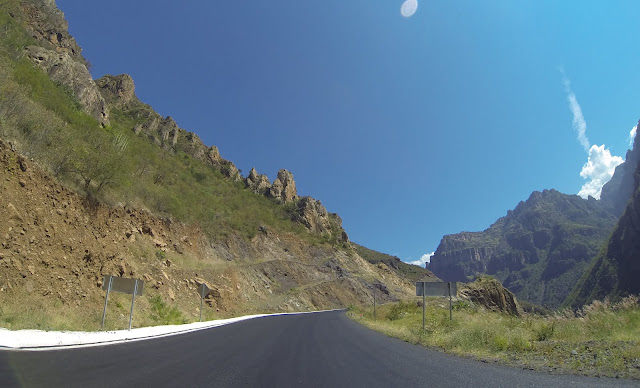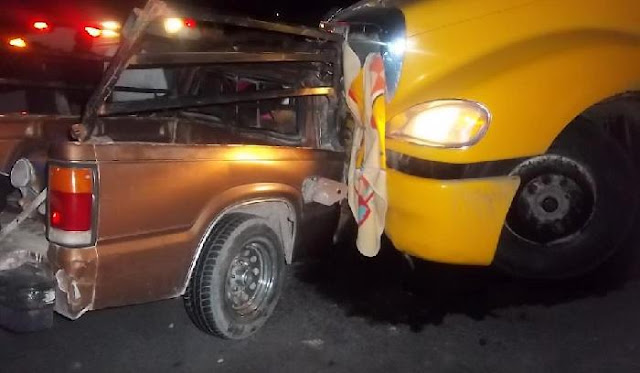Mobile Phones in Mexico by Mexican Insurance Store
Story by Jim Foreman
For Americans, and to a lesser extent Canadians, traveling or spending time in Mexico, a priority concern for most people is Mobile Service.
Having talked to thousands of people who are interested in traveling to Mexico, it’s clear there is a lot of confusion. Add to that the fact that options have changed relatively recently. This means what was a great choice a year or two ago is no longer a wise choice, now.
There are actually two questions that need answering. The first is, “Do I use my US/Canadian based plan in Mexico?" or "Do I get a Mexican Carrier SIM Card?”
For many, a combination answer is the most reasonable choice.
The biggest determining factor for this answer is how long you plan to stay in Mexico. If you are staying for one to three weeks, your answer may be one way. If you are staying over 30-days, your answer is probably another.
If you are staying 30 days or less, in Mexico, in most cases, your US-based mobile carrier will function just fine. There are exceptions, nuances, and most importantly, not all carriers have the same offerings.
If you are staying longer than 30 days, it’s probably best to get a Mexican SIM card and go on a pay-as-you-go plan.
Telcel has, by far, the best coverage and service options. Also, Telcel offers smartphone users free use of the Facebook and WhatsApp Apps on your iPhone or Android phone.
This means you can use the two apps free of any data usage.
As long as your phone is unlocked, you can pop out your US SIM and slide your Mexican SIM in its place and be on your way. You will have a Mexican phone number. During this time, calls to your US-based phone will behave as if your phone is turned off.
If your US phone is locked and you don’t have another unlocked phone you can use, you can buy an inexpensive smartphone and use it primarily for Mexico.
Though most Mexican mobile plans offer free calls to the USA from Mexico, having a local number makes communication with people in Mexico much more natural.
Telcel
To get a Telcel SIM card, one can walk into any OXXO, 7-Eleven, or Telcel store and buy a SIM card and prepay any amount you wish. The more money you prepay to your account, the more free data and minutes they include. If you buy it at the Telcel store, you can have more choice in your number and area code. You will have to ask before they issue the number. Some use of Spanish helps a lot here. At other stores, your choices in numbers are very limited.Recharging is very simple. Just walk into any Oxxo, 7-Eleven, or Telcel store and recharge with cash. Reloading on the website or App may prove problematic with a non-Mexican bank credit card. Both the App and Website are only in Spanish so that may be a limiting factor. The Telcel app is pretty easy to use and figure out how much service you have left before needing to recharge.
There are several other mobile carriers in Mexico including Movistar and AT&T. Their coverage and service are nowhere as good as Telcel.
Top Tier Mobile Carriers
As of January 2018, this is the current offering of the top-tier US Mobile carriers. The companies that make up the top tier are AT&T, Sprint, T-Mobile, and Verizon. Second tier carriers often have more limited coverage or are regional. Some examples of these mobile carriers include Virgin Mobile, Boost Mobile, and Cricket Wireless.
An important consideration for those who will use their US carrier in Mexico is that they all put a limit on consecutive days outside the US for their included features. That number is generally 30 days.
For those who want a simple, “Tell me the Best one to get.” T-Mobile has the best plans, pricing, coverage, and options for regular travelers and visitors to Mexico. As long as T-Mobile has good coverage where you live and work, it is currently the best carrier, as of this writing.
Now the breakdown of the Top-Tier US-based Mobile Carriers in ranking order based on a combination of price, features, and coverage domestically and in Mexico.
T-Mobile One Plan
A single line is $70/month including taxes and fees, with auto pay. Auto Pay is where the monthly charges are paid automatically from your bank or debit card account. T-Mobile is the US Presence of Deutsche Telekom. Deutsche Telekom is probably the biggest mobile carrier in the world. The benefit of that is that in addition to unlimited US text, calling, and data, Canada, and Mexico calling and data, you receive limited included phone, text, and data in 140 other countries. All of this is yours without spending a penny more on add-on features. If you have two or more lines, T-Mobile also includes Netflix service for free. In the US, after 50GB of downloads in a 30 day period, service may be temporarily reduced during peak usage.
In Mexico, you are not locked to a carrier. You can choose the carrier in your phone’s ‘Cellular Settings.’ This is important as TelCel offers 4G speeds when roaming in Mexico while Movistar only allows 2G speeds. 2G feels like dialup. Forget media-rich sites or messages with 2G. This is T-Mobile’s policy limitations regarding roaming in Mexico or Canada in their Terms and Conditions. “50% of your voice and/or data usage being off-net (i.e., connected to another provider’s network) for any 3 billing cycles within any 12 month period.”
AT&T Unlimited Choice or Unlimited Plus
A single line is $60/Mo plus taxes and fees, with auto pay and paperless billing. The Unlimited Choice plan’s data speeds are limited to 3Mb/s. 4G LTE is typically 12Mb/s with burst rates up to 50Mb/s.
The Unlimited Plus for $90/mo is full-speed 4G LTE. In the US with the Unlimited Plus Plan, after 22GB of data in a month, service will be temporarily reduced during peak hours.
Unlike T-Mobile, AT&T will, by default, lock you into a carrier in Mexico. This means you will be forced to use AT&T Mexico (4G LTE) or Movistar at 2G speeds. Again, 2G feels like dialup. You may call customer service to have that restriction lifted. According to AT&T, the usage policy in Mexico or Canada states: “Roaming feature may be removed if voice, text, or data usage in Mexico and/or Canada exceeds 50% of total voice, data or text usage for 2 consecutive months.” AT&T offers HBO for free after 2 billing cycles.
Verizon BeyondUnlimited
When traveling in Mexico or Canada, phone, text, and data are included at no additional charge. There are some restrictions. After the first 500MB/day, speeds are reduced to 2G (dialup). Roaming in Mexico or Canada is limited to less than 50% of your talk, text, and data usage in a 60 day period. If those limits are exceeded, service can be interrupted or removed.
It is unclear if Verizon locks you to a particular Mexican carrier. Best guess is that they don’t.
Sprint Unlimited Freedom Plan
Sprint has the Unlimited Freedom plan starting at $60/month plus taxes and fees with Autopay. Sprint tiers their domestic data streaming rates depending on if your streaming video, gaming, or Music. Generally, one won’t notice any limitations during normal operation.
In Mexico Sprint includes, according to their website, “Free LTE/4G high-speed international data roaming in Canada & Mexico. Free calling and texting while roaming in Canada & Mexico.” Without being specific, Sprint’s terms and conditions state that “Service may be terminated or restricted for excessive roaming.”
It is unclear if Sprint locks you to a particular Mexican carrier. Best guess is that they don’t.
Second Tier and Regional Mobile Carriers
Second Tier and regional carriers are much less consistent with their plans and roaming in Mexico policies. While not complete, here is a general rundown of the offerings available.
Boost Mobile Unlimited Gigs and the Todo Mexico Plus add-on.
Boost Mobile offers the Unlimited Gigs Plan for $50/month including taxes and fees. Like Sprint they also cap the datarate for video, gaming, and music streaming.
For Mexico, you will need to add the $5/Month Todo Mexico Plus which includes "Data Roaming, up to 8GB, Unlimited calls to U.S. & in Mexico, and Unlimited International text (SMS only)." The Boost Mobile Terms and Conditions state: “Data roaming provided at 2G/3G speeds; data roaming access ends when applicable allotment depleted & restored at next plan cycle. Includes unlimited int'l. text & talk to landlines and mobiles in Mexico and Canada (excluding Northern Territories/area code 867). Not for extended int'l. use; first & primary usage must occur on our U.S. network.”
Virgin Mobile Inner Circle
Virgin Mobile is NOT a good option to take into Mexico. It’s best to leave that SIM at home and get a Telcel SIM or switch carriers.
Cricket Unlimited Plan
Roaming in Mexico and Canada is included. Here are Cricket’s Terms and Conditions: “Includes calling/texting in Mexico, Canada and between the U.S., Mexico & Canada. Also includes use of the high-speed data allotment from your plan while traveling in Mexico and Canada. Actual data speeds vary by device and location. Each number of texts, number of voice minutes, and data usage sent, received or used while in Mexico and Canada cannot exceed 50% of the total number of texts or voice minutes or data usage (including domestic use) in a month for any consecutive three month period or service may be terminated. Roaming services not guaranteed, limited coverage in select markets outside the U.S. Other restrictions apply.”
Google Project Fi
Google Fi is a newcomer for personal communications. It's got some appealing aspects including worldwide data at one rate in over 135+ countries.
The cost is $20/month for domestic only calls and texts and $10 per Gigabyte. Any Gigabytes you prepay for and don't use get credited toward your next month's bill.
If you use 5 Gigabytes of data a month, your bill comes to $50. If you go over and use 9 gigabytes per month, you pay $90.
Project Fi rides on top of existing major networks so coverage is usually pretty good. The downside is that the major networks sell off their extra capacity to Google Fi or Virgin Mobile at typically reduced data rates and quality.
This service is also strictly limited to Google Pixel phones. Forget it if you want to use your iPhone or Galaxy 8. Use of an existing or established phone number is complicated. Voice calls outside of the US are billed per minute.
It may be an excellent choice for some tech savvy travelers. There is a helpful questionnaire one can use to determine if Project Fi is a good choice for them.
Conclusions
Sometimes the little details make all the difference. This is especially true with mobile service in Mexico.Plans and included services change often and typically get better and better for the consumer. It wasn’t too long ago that no carrier included Mexico roaming.
Call your carrier and make sure your plan is capable and compatible with Mexico roaming and what the restrictions and limitations are. If your phone is locked, by your carrier, you may be able to unlock it for free, legally. Most offer to unlock the phone when your contract expires. Contact your mobile carrier for details.
Traveling in Mexico is fun and easy. All you need is your passport, depending on where you go, a Temporary Vehicle Import Permit, and lastly, Mexican Insurance.
Head out on adventure and discover the wonderful offerings from our great southern neighbor.









 When in Rome, do as the Romans do. -
When in Rome, do as the Romans do. -
























